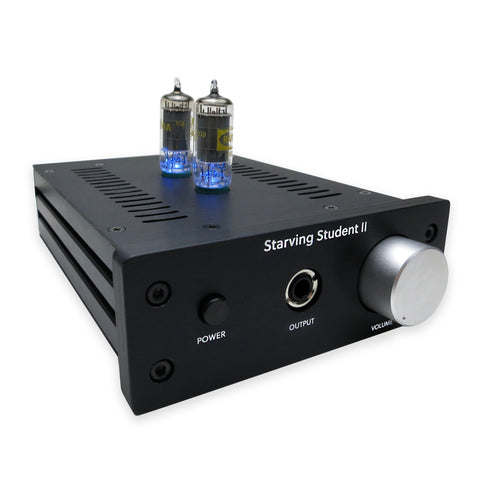

- Xm26 tube electronic crossover network kit skin#
- Xm26 tube electronic crossover network kit full#
- Xm26 tube electronic crossover network kit series#
Xm26 tube electronic crossover network kit full#
On the other hand, a spring-backed jewel permits full deflection with less than 20°/o increase in pivot pressure.The cushion-backed protects a little, but still won 't do the job under the rugged use to which most of us put meters and test equipment. so-called cushionbacked and fixed jewels. In contrast are the two constructions shown above right. jewel and avoids subsequent "stickiness" or inaccuracy. SPRING-BACKED JEWELS (left above) dissipate much of the shock energy on a movement's moving part. Copyright © 1966, Hayd en Publishing Compa ny, Cont roll ed -c irc ulation postage p aid atĬh ic ago, Ill., a nd New York, N. High-current de Constant-current de Laboratory-type de High-voltage de Special-purpose de Regulated ac Modular deĮLECTRONIC DESIGN is published bi -weekly by H ayd en Publish i ng Compa ny, Inc.
Xm26 tube electronic crossover network kit series#
154Ĭover: Sorensen's all-silicon DCR series with output capability to 20 kw. New trends are emerging in power supply design. 14ĭo you know when to consider a custom power supply?. Use a systematic approach the next time you buy a power supply. Write Sola Electric, Division of Sola Basic Industries, 1717 Busse Road, Elk Grove Village, Illinois 60007. Send us your specifications, or a description of the end result required. remember, SOLA con custom-build your power supplies in OEM quantities. extreme temperatures, tight regulation, low ripple, compactness, stability. This is one of the many "tough spec" custom power supplies SOLA hos engineered over the years. It operates in a temperature range of -55☌ to 72☌, at thirty times the pull of gravity. What's more, it provides regulation of ± 0.25% for all conditions of line, load, and temperature. The SOLA power supply used in liquid gages, for example, contains 120 ports, four etched circuit boards, yet measures only 1.86" in diameter, and. Electron probe microanalysis equ ipment, nucleonic liquid gages for supersonic aircraft, precipitotors, CRT devices, for instance. Proof? SOLA hos custom-designed power supplies for the most sophisticated applications. No specs ore too tough for SOLA design engineers.

Save time and effort the next time youīuy one by first consulting this special reference issue.
Xm26 tube electronic crossover network kit skin#
These promising results indicate the potential of using these biomimetic hydrogels as in vitro skin models for pharmaceutical products and cosmetics and future work will elucidate their potential functionality for clinical treatment.By the thousands are available on the market today.

Furthermore, filaggrin expression showed the formation of an enhanced stratum corneum for the constructs containing HA. Organotypic skins formed in vitro after 21 days with plasma/HA-SH-PEGDA hydrogels with an HA content of 0.05% w/ v and a 2:1 crosslinking ratio were up to three times thicker than the plasma controls, evidencing a reduction in contraction, while they also showed better and more homogeneous keratin 10 (K10) expression in the supra-basal layer of the epidermis. The metabolic activity of primary human keratinocytes (hKCs) seeded on the hydrogels showed a decrease when high amounts of HA-SH and PEGDA crosslinker were incorporated. The metabolic activity of hFB returned to the control levels at 14 days except for the 2:1 PEGDA crosslinking ratio. The results showed that the increase in rigidity of the matrices as well as the absence of adhesion cellular moieties in the second network of HA-SH/PEGDA, resulted in a decrease in contraction in the presence of the encapsulated primary human fibroblasts (hFBs), which may have been related to an overall decrease in proliferation of hFBs found for all hydrogels after 7 days with respect to the plasma control. Furthermore, the results showed that a minimal amount of the added HA-SH was able to escape the plasma/HA-SH-PEGDA hydrogels after incubation in PBS. Plasma/HA-SH-PEGDA hydrogels showed a decrease in the contraction behaviour ranging from 5% to 25% and an increase in Young's modulus. In this sense, hydrogels composed of plasma-derived fibrin and thiolated-hyaluronic acid (HA-SH, 0.05–0.2% w/ v) crosslinked with poly(ethylene glycol) diacrylate (PEGDA, 2:1, 6:1, 10:1 and 14:1 mol of thiol to moles of acrylate) were developed to reduce the shrinking rates and enhance the mechanical properties of the plasma-derived matrices. However, several issues associated with their poor mechanical properties were observed, and they often resulted in rapid contraction and degradation. Human plasma-derived bilayered skin substitutes have been successfully used by our group in different skin tissue engineering applications.


 0 kommentar(er)
0 kommentar(er)
